Loading
Archives of Clinical Ophthalmology
ISSN: 2771-7925
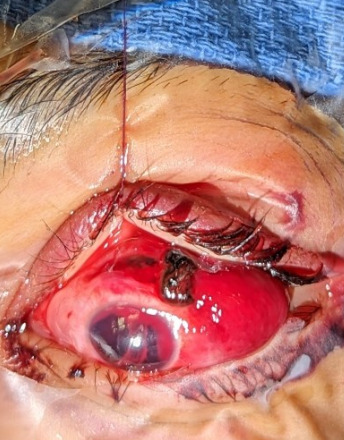
2023
Volume 3, Issue 1, p1-26
Articles published in this issue are Open Access and licensed under Creative Commons Attribution License (CC BY NC) where the readers can reuse, download, distribute the article in whole or part by mentioning proper credits to the authors.
Uhthoff ’s Phenomenon as Presentation of COVID-19 Infection
Pieter Gouws, Alexander Gouws
This is the first reported case of COVID-19 associated optic neuritis (ON) presenting with classic Uhtoff’s phenomenon typically associated with multiple sclerosis (MS). Uhthoff phenomenon, also known as Uhthoff sign or syndrome, is a transient worsening of neurological function lasting less than 24 hours that can occur in multiple sclerosis patients due to increases in core body temperature.
Arch Clin Ophthalmol, 2023, Volume 3, Issue 1, p1-2 | DOI: 10.33696/Ophthalmology.3.008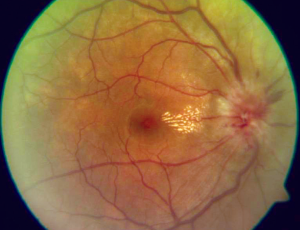
Assessment of Visual Function for Education: A Commentary on ‘VEP Visual Acuity in Children with Cortical Visual Impairment’
Alison M Mackay
Last year’s article In the International Journal of Clinical and Experimental Ophthalmology [1] highlighted that Cortical Visual Impairment (CVI) is now the leading cause of visual impairment in the developed world [2]. It also provided a definition of CVI [3,4], and summarized its functional deficits, and methods of assessment.
Arch Clin Ophthalmol, 2023, Volume 3, Issue 1, p3-4 | DOI: 10.33696/Ophthalmology.3.009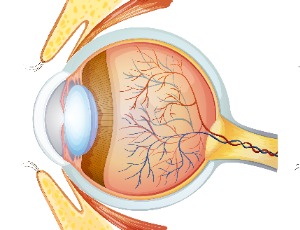
Are Women with COVID-19 and Migraine Prone to AMN Type 2?
Maxime Depasse, Marcel PM ten Tusscher, Vincent De La Porte, Robert W Kuijpers
Acute macular neuroretinopathy (AMN), first described by Bos and Deutman in 1975 [1], is an infrequent yet increasingly diagnosed retinal condition, characterized by the acute onset of persisting paracentral scotomata with capricious vision loss in one or both eyes, associated with (peri)foveal petaloid (wedge-shaped) outer retinal lesions generally accepted to be caused by microvascular damage to the retinal capillary network of the macula [2,3].
Arch Clin Ophthalmol, 2023, Volume 3, Issue 1, p5-12 | DOI: 10.33696/Ophthalmology.3.010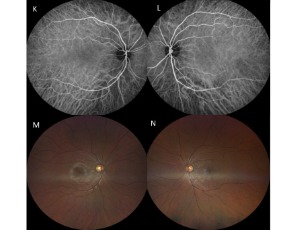
Orbital Lymphoproliferative Disorders (OLPDs) in a 3-year-old Child: Case Report and Review of Literature
Caiping Shi, Jia Feng, Sujuan Zhao, Jiao Zhan, Yanhong Ren, Weizhong Gu, Xiaoyu Zheng
Orbital lymphoproliferative disorders (OLPDs) consist of a spectrum of diseases ranging from benign to malignant lesions including reactive lymphoid hyperplasia, atypical lymphoid hyperplasia, and lymphoma. OLPDs rarely present as an orbital mass lesion in children. Accurate discrimination of OLPDs is crucial for treatment planning. We report a case to investigate the clinical and pathological
features of OLPDs in children.

A Rare Case of Vitreous Cyst
Yogesh Kumar, Jatinder Singh Bhalla, Ridhima Sakhuja, Neha Yadav
A patient with a unilateral congenital vitreous cyst attached to the posterior lens capsule is now described, with its photographic appearance.
Arch Clin Ophthalmol, 2023, Volume 3, Issue 1, p20-22 | DOI: 10.33696/Ophthalmology.3.012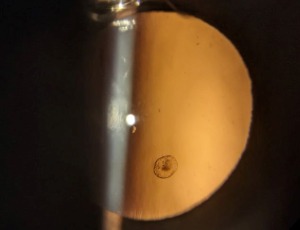
An Unusual Case of an Open Globe due to Airbag Injury and Scleral Lens Use
Mary K. Wilson, Lee P. Bowman, Jonathan K. Hu, Charles R. Blake
A 30-year-old woman who wears scleral contact lenses for keratoconus was brought to the emergency room after a motor vehicle collision where a deployed airbag hit her left eye. The patient was taken to the operating room for globe exploration and found to have two large scleral lacerations (one superiorly and one temporally) with significant uveal prolapse.
Arch Clin Ophthalmol, 2023, Volume 3, Issue 1, p23-26 | DOI: 10.33696/Ophthalmology.3.013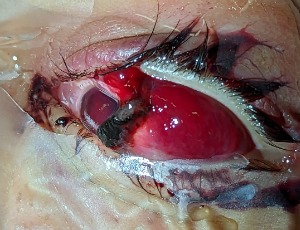
Recommended Articles
COVID-19 Clinical Research
While the global COVID-19 pandemic has challenged the entire humanity and health systems, it also triggered researchers to urgently perform clinical trials to assess the safety and efficacy of many agents and modalities to combat COVID-19. As of April 22, over 650 clinical studies have been registered both in USA and internationally. Results from these studies are also coming at a brisk pace in this unprecedented emergency.
Therapeutic Values of Ketamine for COVID-19-Cared Patients: An Expert’s Point of View
Ketamine has long been used in the field of anesthesia [1]. Its rapid and long-acting analgesic effects associated with its dissociative properties have also established its use in prehospital and emergency department patients.
A Bioinformatics Protocol for Rational Design of Peptide Vaccines and the COVID-19 Rampage
The currently ongoing coronavirus pandemic, the SARSCOV- 2, interchangeably referred to as the COVID-19 infection, has in a short span of time altered the ways and means of almost all of mankind. So strong has been its effect that all human activity ceased in one way or another for a considerable time, led to significant loss of life and economic drain of.
Mega-Dose Dietary Riboflavin in Treatment in Keratoconus, Post-Refractive Cornea Ectasia and Migraine. Has Its Time Arrived?
Recently, several studies and investigators have shown the beneficial effects of high dose dietary riboflavin (vitamin B2) in the treatment of keratoconus, post-refractive (LASIK, PRK & Radial Keratotomy) ectasia (with sunlight exposure) and patients treated with our own protocol (NIH Clinical Study – www.clinicaltrials.gov - # NCT 03095235) discovered significant relief for intractable migraine headaches and/or ophthalmic migraine (classic migraine visual symptoms without headache).
Lessons Learnt from COVID-19: How Can We Prepare for Another Pandemic?
Five months into the COVID-19 pandemic, the U.S. death toll from the virus has now surpassed 100,000 people. Many more cases remain nationwide, while an unknown number of patients currently harbor the virus asymptomatically. While health officials are now optimistic regarding the decline in prevalence and number of deaths due to COVID-19 and the possibility of a vaccine by the fall, we cannot lose sight of the bigger picture: the next pandemic.
Safety of Using Rituximab Therapy During COVID-19 Pandemic
Rituximab is a chimeric (20% rodent and 80% human) monoclonal antibody that binds to the CD20 antigen present on the cell surface and leads to depletion of mature B-cells [1,2]. It is the first approved monoclonal antibody to be used in the therapy of indolent B-cell non- Hodgkin’s lymphoma and chronic lymphocytic leukemia
Educators as Essential Workers in the Era of COVID-19: Applying Lessons from Disaster Recovery
In the article, “Mental Health Framework: Coronavirus pandemic in post-Katrina New Orleans” [1], Shervington and Richardson offer recommendations about how to anticipate and address disaster-related, trauma exposures associated with the coronavirus pandemic
How Well Do Hemodialysis Patients Respond to the BNT162b2 mRNA COVID-19 Vaccine?
In January 2020, the World Health Organization (WHO) classified COVID-19 to be a Public Health Emergency of International Concern and declared it a pandemic on March 11, 2020 [1]. Over one hundred and eighty-five million people have been infected by SARS-CoV-2 and roughly four million have died worldwide so far
In silico Analysis for the Repurposing of Broad-spectrum Antiviral Drugs against Multiple Targets from SARS-CoV-2: A Molecular Docking and ADMET Approach
SARS-CoV-2 belongs to the genus Beta of the Coronaviridae family of enveloped single-stranded, positive-sense ribonucleic acid (RNA) with a genome length of 30,000bp. The virion is composed of various non-structural (RNA dependent RNA polymerase also known as RdRp) and structural proteins such as Spike (S), Nucleocapsid (N), Matrix (M), and Envelope (E) proteins.
Predicting COVID-19 Hospitalized Patients’ Outcome with Homocysteine
The COVID-19 pandemic has provoked a global, rapid increase of cases due to the high infectivity of the etiological agent, COVID-19 virus. In February 2021, over 110 million confirmed COVID-19 cases with 1 million deaths were reported worldwide (www.who.int).
Dexamethasone: The First Drug to be Shown to Decrease Mortality in Critically Ill Patients with COVID-19
The precise role of corticosteroids for treatment of coronavirus disease 2019 (COVID-19) is unclear due to lack of randomized trials.
How to Prevent Rehospitalization in Patients with COVID-19
Since December 2019, Severe Acute Respiratory Syndrome Coronavirus 2 (SARS-CoV-2) caused by 2019 Novel Coronavirus (2019-nCoV) has resulted in 89,000 cases of Corona Virus Disease 2019 (COVID-19), formerly known as Novel Coronavirus Pneumonia (NCP) in China, including 2,450 deaths.
Cortical Visual Impairment (CVI): An Atypical Manifestation of Osmotic Demyelination Syndrome in a Child
Osmotic Demyelination Syndrome (ODS) is a unique process of selective demyelination and destruction of oligodendrocytes and astrocytes in specific areas of the brain that usually occurs a few days after an osmotic stress [1]. ODS has been described most frequently in association with a rapid correction of hyponatremia, though it may occur with other electrolyte or metabolic abnormalities.
Classical Drug and its New Role in COVID-19 Management
COVID-19 is the new emerging viral infection that already cause global public health problem [1-3]. More than 220 countries/territories are already attacked and there are more than 17 million patients around the world
Beta-Sitosterol: As Immunostimulant, Antioxidant and Inhibitor of SARS-CoV-2 Spike Glycoprotein
This article is an extension to our recently published article in Asian Journal of Pharmaceutical and Clinical Research, entitled “Β-Sitosterol: Isolation from Muntingia Calabura Linn. Bark Extract, Structural Elucidation, and Molecular Docking Studies as Potential Inhibitor of SARSCoV-2 Mpro (COVID-19)”[1].
Rapid Inactivation of SARS-CoV-2 by Coupling Tungsten Trioxide (WO3) Photocatalyst with Copper Nanoclusters
At the end of 2019, a novel severe respiratory disease (coronavirus disease 2019, COVID-19) spread to Wuhan, China, it became pandemic in few months, with more than 41 million people infected worldwide as of October 2020. COVID-19 is caused by a novel virus called severe acute respiratory syndrome (SARS) CoV-2 to distinguish it from SARS-CoV that emerged in Guangdong province in China in 2003 and caused the severe clinical condition known as SARS. Like SARS-CoV, SARS- CoV-2 causes a severe inter
Preparing for a More Public Health-Aware Practice of Medicine in Response to COVID-19
After one year in a pandemic, we mourn the loss of over half a million lives in the United States, and over four million worldwide, and remain concerned over the challenges facing the families of 35 million people in the United States, and 200 million worldwide, who have suffered from cases of COVID-19.
Quantifying Respiratory Airborne Particle Dispersion Control Through Improvised Reusable Masks: The Physics of Non-Pharmaceutical Interventions for Reducing SARS-CoV-2 (COVID-19) Airborne Transmission
In light of the current pandemic from rapid transmission of the severe acute respiratory syndrome coronavirus 2 (SARS-CoV-2 or COVID-19) and significant morbidity, there has been inconsistent medical guidance given to the public regarding the wearing of non-medical improvised fabric masks or face coverings to reduce the transmission of COVID-19.
In Silico Proteome Analysis of Severe Acute Respiratory Syndrome Coronavirus 2 (SARS-CoV-2)
Severe acute respiratory syndrome coronavirus 2 (SARSCoV- 2) is a positive-sense, single-stranded RNA with genome size 26.2, and 31.7 kb coronavirus, covered by an enveloped structure, which is a major source of disaster in the 21st century. A typical CoV contains at least six ORFs in its genome. SARS-CoV-2 is the seventh coronavirus that is known to cause human disease.
The Use of Hydroxychloroquine and Interferons for the Prophylaxis of COVID-19
At the beginning of Covid-19 pandemic, we proposed to use hydroxychloroquine (HCQ) and intranasal interferon (IFN) a-2b spray to prevent SARS-CoV-2.
About Scientific Archives
Scientific Archives is a global publisher initiated with the mission of ensuring equal opportunity for accessing science to research community all over the world. Spreading research findings with great relevance to all channels without any barrier is our goal. We want to overcome the challenges of Open Access with ensured quality and transparency.
